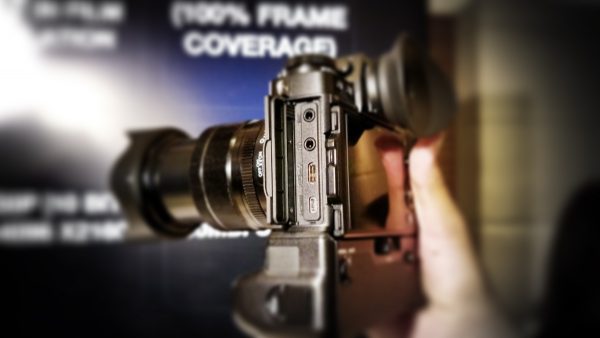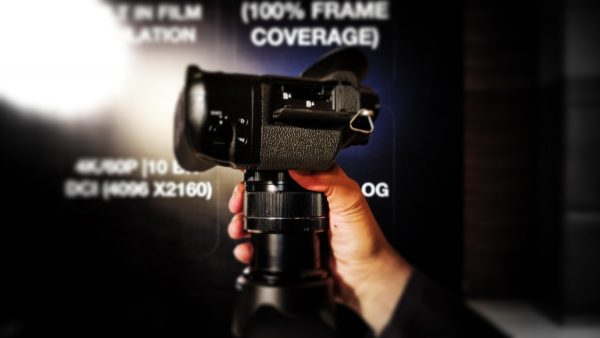Here is a true story of a trek that I will be doing in December 2018.
What? December is still three months away. Is this some kind of a joke?
No. I know this is what is going to happen. So have patience and just read on. It is obviously cold and the light is playing games today. But I have the newest smartphone in my pocket and all reviews have said that its camera performance is superb and unbeatable. I pull it out with a swish (after all, it is an expensive gadget and I am justified in attempting a show-off) and swing it towards a distant peak. I zoom it and click with a gesture. I look around and am in for the biggest shock of my life.
No one other than me has a smartphone in their hands. They are all having what looks like a conventional camera. So I ask, ‘A DSLR? Why? Aren’t they heavy and ugly? Don’t they give you hopeless results if you’re clicking a video?’
‘Dude, you’ve been duped,’ says one of the trekkers with a smile, ‘what we are all holding is the Fujifilm X-T3 and your smartphone pictures are no match for this one.’
I obviously compare the results even though I knew that a smartphone camera is never a match for a DSLR. I am impressed. The peak on my smartphone screen isn’t as magnificent as the one they show me.
One of them tells me not to fret and that they would share a few pictures with me. They ask me to go and consider buying the world’s first mirrorless digital camera that has a large sensor capable of 4K/60P 4:2:2 10bit HDMI output. Another trekker adds that the camera has another world’s first tag as it has an internal SD card recording ability. ‘So you won’t ever get caught in a sticky situation where storage is an issue,’ he smiled.
‘Ah! So the Fujifilm X-T3 is a mirrorless camera,’ I said, ‘But I am a conventional DSLR fan. I have one at home but as it is a bit heavy I decided to bring my smartphone instead.’
‘Bad move,’ he said, ‘even your heavy DSLR would have given you better results. But the one we are having is priceless.’
The X-T3, I was explicitly told, is new and a third generation marvel with a sensor and a processor that has leap-frogged into the future if you want dynamics, IQ, and speed. I knew that sensors are nothing but light-sensitive plates and the processor interprets actions and presents the final output. I was told that the X-T3 comes with the X Processor 4 chip that helps the X Trans 3 sensors give their best as it accepts only the best. The camera also boasts of 26.1 megapixels and comes with the backside illuminated.
‘You mean I get to stay ahead in terms of autofocus, burst shooting, and video performance?’
‘You said it!’ This isn’t all. The base ISO on this camera is now ISO160 which is better than the earlier ISO200… and the extended ISO goes further down to ISO80. This is simply fabulous. So far as videos are concerned, the Fujifilm X-T3 is capable of shooting 4K at 60fps with 10-bit colour depth and 1080p at slo-mo 120fps. By the way, the X-T3 can record 60fps footage at 200Mbps too and at 30fps, the camera uses the entire landscape of the sensor (not a 1.18x crop) and gives a high quality 400Mbps bit-rate.
To my query on burst shooting, I was told that one could shoot bursts up to 30fps in the new 1.25x sports-crop mode and when combined with the electronic shutter can get blackout-free 30 fps shooting. Most of us shoot jpegs and the camera handles this at 60 frames though for RAW+jpeg the buffer fills after 33 shots. If the sports-crop mode isn’t applied, the X-T3 does 20fps with electronic shutter and 11fps using the mechanical shutter. Buffer holding is 36 shots of RAW+jpeg and 80 to 145 in the jpeg mode.
‘This seems charmingly efficient’, I said, ‘and while in Bharatpur, I can possibly shoot even birds flying towards me.’
‘Yes, at 200mm and f/2.’
This isn’t all. As we trudged up the steep slope during that trek, there was more and more about the X-T3 that came as joyful revelations. The fact that there are 425 AF points which is more than what the earlier versions had. The touchscreen in the camera makes it as brilliant to operate as smartphone users are so accustomed to… and 4-way swipes do everything that was button operated earlier.
A few friends did allow me to go ahead and click with the X-T3 and the 539g weight did not bother me at all. The battery grip was fine, no unnecessary ports anywhere to complicate operations, and the magnesium alloy body felt sturdy, reliable, and evenly balanced. The analogue dials are smooth and sans creaky jerks and most other buttons on the X-T3 are customizable and can be configured to do any task from changing ISO to checking focus. The audio out, mic, HDMI, and new USB-C interface are all enclosed below the hatch on the left side of the camera, which is detachable for use on video-rigs, gimbals etc.
For my reference, I muttered, ‘This camera comes with 26-megapixel APS-C X-Trans CMOS 4 sensor, a 425-point hybrid AF system, a 3.69-million-dot electronic viewfinder, and is capable of 4K, 60fps 10-bit video capture, is available in black or silver, and has a ISO range of 160-12800 (expands to 80-51200).’ The other trekkers looked at me and smiled.
But hey, this story is going to happen a few months later… and I am the one who is going to learn a few lessons on the convergence of travel, trekking, and photography. But for most readers, my post is probably going to be the savior. Go ahead and try this mirrorless camera… I’m sure you will love the experience.
So far as I am concerned, I can only hope the company decides to send a review piece to me to try out and only then would I be able to post articles with pictures to prove all that I have just written about.
.
.
.

Fujifilm X-T3_world’s first mirrorless digital camera that has a large sensor capable of 4K_60P 10bit HDMI output
.
.
.
Arvind Passey
25 September 2018












